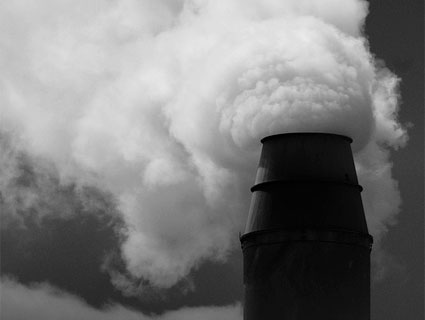On Monday I posted an explanation of the Supreme Court case American Electric Power Company Inc. v. Connecticut, which the court heard oral arguments on this morning. At the heart of the case is the question of whether states and other entities can sue the country’s biggest emitters for their contribution to global warming. Six states, the city of New York, and a handful of land conservancies have filed suit against the five biggest emitters in the United States using a common law nuisance argument. Basically, they argue that global warming, caused at least in part by these utilities, is harming their residents and environment.
On Tuesday, the American Security Project released a new report outlining the impact climate change could have on each state. The report could help bolster the states’ arguments by showing that climate change really could have real and quantifiable impacts on states’ economies.
Here are some of the projected costs to the six states involved in the case:
Connecticut:
- The Environmental Protection Agency estimates that protecting the coast from a projected 20-inch sea level rise in sea level would be between $500 million and $3 billion by 2100.
- Rising temperatures are a threat to wildlife and forestry in the state, which generate $300 million in annual revenue through tourism.
- Between 2010 and 2050, climate change could cost Connecticut $9.5 billion in gross domestic project loss and over 36,000 jobs.
Iowa:
- Winters and springs could become 30 percent wetter over the next few decades—increasing the frequency of weather events like the flood that ruined $4 billion in crops in 2008.
- Iowa farmers already lose $40 million in hogs and pigs every year due to heat stress, a number that would likely climb as temperatures rise and impact an industry worth $4.3 billion annually.
Rhode Island:
- The EPA estimates that sea level rise will cost Rhode Island up to $530 million by the end of the century.
- Climate-spurred natural disasters affecting the port of Providence could directly impact the manufacturing and trade that accounts for 25 percent of the state’s $45 billion annual income.
Vermont:
- Under business-as-usual projections, average temperatures in the state are expected to rise between 4 and 5 degrees Fahrenheit by the end of the century, a change that would cut short the sap-tapping season and hurt the $32 million maple syrup industry.
- Shorter winters and less snow would raise operating costs for ski resorts, a $750 million industry in the state, as operators would have to churn out more artificial snow to stay in business. The amount of artificial snow produced by ski resorts is already increasing; it went up 15 percent between 1997 and 2009.
New York:
- Increased frequency and severity of hurricanes, Nor’easters and other extreme events could lead to “hundreds of billions—if not trillions—of dollars” in losses for New York’s coastal areas.
- Industries that will be affected by climate change provide 290,000 jobs and $77 billion in profits each year for New York.
- Between 2010 and 2050, New York stands to lose $122.9 billion in GDP and over 560,000 jobs due to climate change.
California:
- If emissions continue on the high-end of projections, the state could see sea level rise of 22 to 30 inches. Protecting the area around San Francisco Bay alone could cost up to $30 billion each year.
- Ozone and particulate pollution already causes 8,800 deaths and costs the state $71 billion annually, numbers that are expected to rise with temperature.










